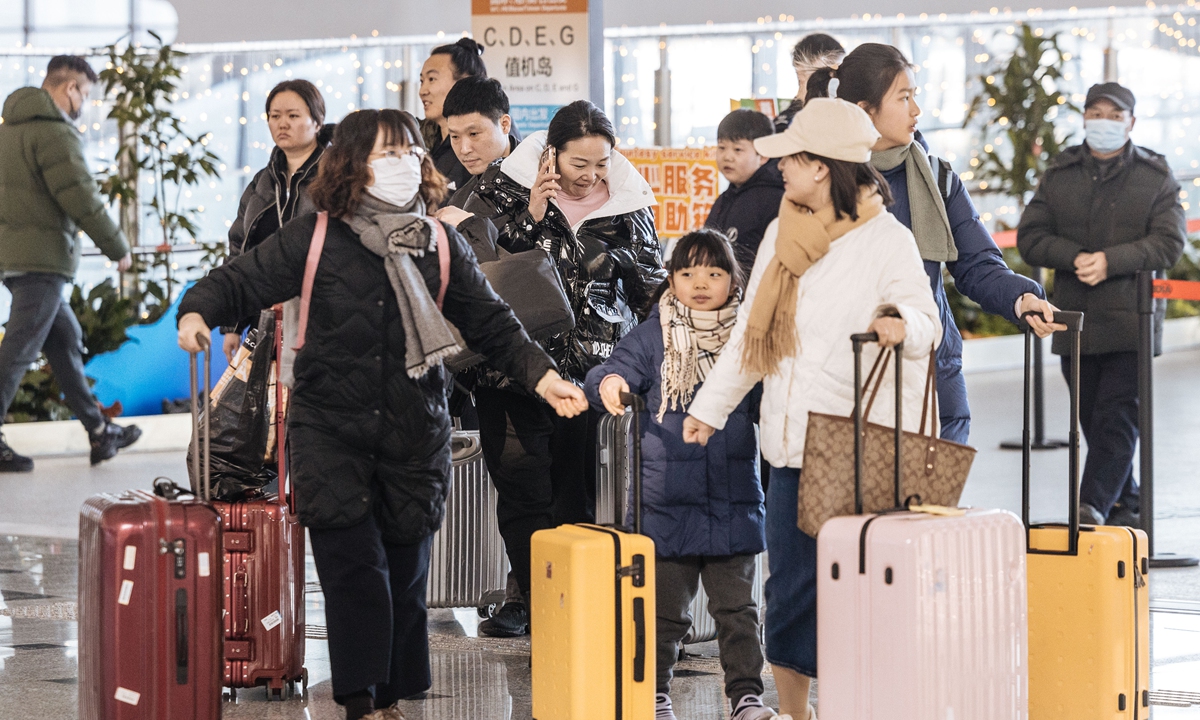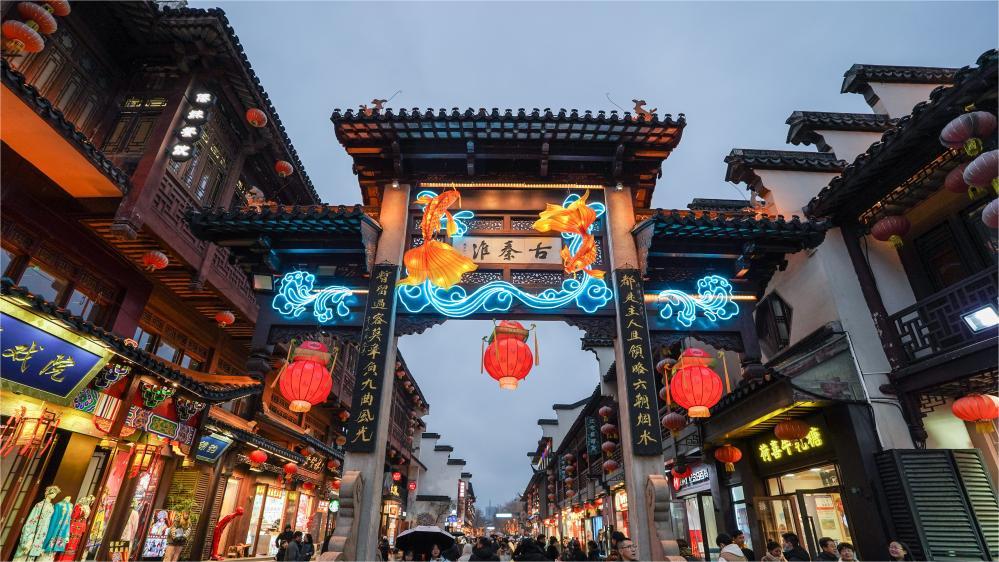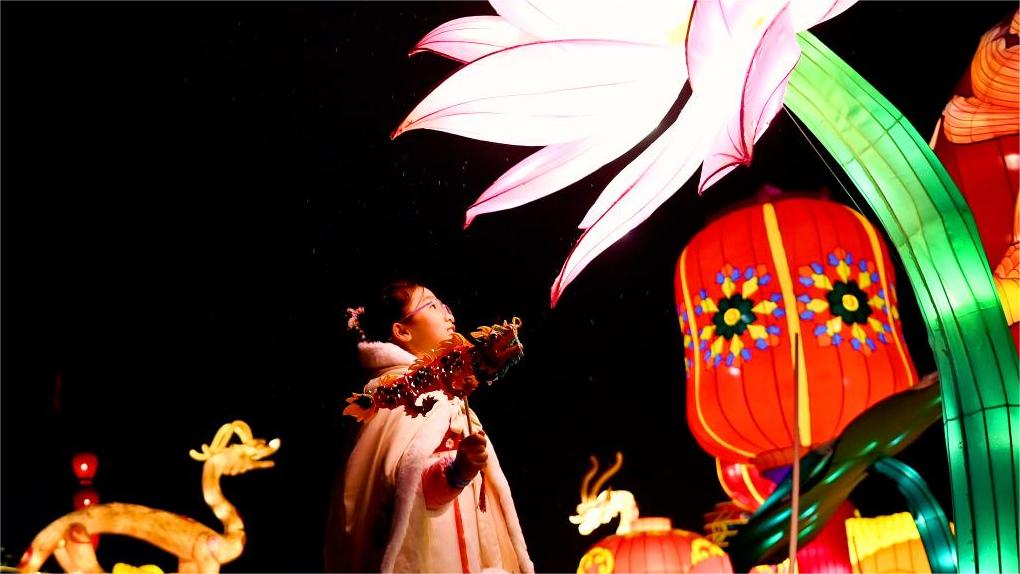Upcoming Spring Festival to see 'hottest outbound tourism in five years'

Beijing Daxing International Airport welcomes its first day of peak travel as the Spring Festival travel rush started on January 26, 2024. Photo: Li Hao/GT
The upcoming Chinese New Year (CNY) holidays, also known as Spring Festival holidays, are set to mark a rebound in the tourism sector as ports across China will embrace hustle and bustle again, which is expected to reach the same level as in 2019. With China achieving comprehensive mutual visa exemption with 23 countries including Thailand, Singapore and the Maldives, the tourism market is expected to witness "the hottest outbound tourism in five years," industry insiders predicted.
The tourism rebound is also set to fuel economic recovery which will boost public confidence, industry representatives said. Besides, China's solid economic foundation, visa facilitation and its large population are favorable factors for the long-term development of the outbound tourism market.
During this year's Spring Festival holidays, international points of entry and exit will see high volumes of inbound and outbound travelers. The daily average number of passenger clearances at international is expected to reach 1.8 million people, approximately 3.3 times higher than last year's Spring Festival and equivalent to the 2019 Spring Festival level, the National Immigration Administration (NIA) predicted on Sunday.
Major international airports are expected to experience peak passenger flows from February 8 to 11 and from February 16 to 17, the NIA said. Land ports to Hong Kong and Macao are expected to experience peak passenger flows from February 11 to 15, with estimated daily passenger numbers at Shenzhen Luohu customs facility, bordering Hong Kong, set to reach 198,000.
Singapore and Thailand have both recently signed mutual visa exemption agreements with China, and the Chinese Foreign Ministry said that the mutual visa exemption between China and Singapore, to be effective on the eve of this year's Spring Festival, is a Chinese lunar New Year gift for Chinese and Singaporeans.
"This year's inbound and outbound travel is different from previous years. First, the holiday period is longer, and compared to previous years, especially during the COVID pandemic, now there is more certainty," Yang Jinsong, director of the institute of international tourism development and associate researcher at the China Tourism Academy (CTA), told the Global Times on Sunday.
Meanwhile, there has been significant progress in visa facilitation, which has also instilled confidence in Chinese tourists, Yang said.
According to a report released by the CTA on Thursday, since the beginning of 2023 when China downgraded COVID-19 management, the county's outbound tourism market has started to reopen, moving from a harsh winter toward a spring of recovery.
With the strengthening of China's tourism market dynamics and residents' willingness to travel abroad, the pace of international tourism recovery in the Asia-Pacific region is expected to accelerate significantly. In 2023, the number of outbound tourists of China exceeded 87 million. It is projected that the number of outbound tourists in 2024 will reach 130 million.
In full recovery
After a flight of five hours, a couple from Beijing arrived Suvarnabhumi Airport in Bangkok at 11:49 pm local time on January 19 as they embarked on their honeymoon in Thailand.
Since Thailand has granted visa waiver status for visitors from China and some other countries, the wife of the couple, surnamed Xu, told the Global Times on Sunday that when they arrived at immigration and prepared to enter Thailand, all the immigration booths were open with about several hundreds of passengers from China, Japan, Europe and other countries and regions lining up for clearance.
"About two-thirds of the passengers were from China. Thailand is very popular among many Chinese travelers," Xu said.
Although the line was long, it did not take long for the couple to rush through. During the immigration process, Chinese tourists only need to show their inbound flight tickets and passports, provide their fingerprints and take a photo before obtaining a clearance stamp, and completing the process. Xu said that it only took around two minutes.
"It was super fast. You don't need to fill in the immigration card, neither to show the return ticket, or the hotel order, you just need your passport," Xu said.
Many Chinese travelers prefer Southeast Asian countries as their top overseas destinations for the upcoming Spring Festival, or Chinese Lunar New Year holidays, with Maldives, Singapore and Thailand topping out the top 10 list of favored destinations, according to a Global Times online poll.
According to the 2024 Spring Festival tourism market forecast report released by China's major travel booking platform Ctrip, in terms of outbound tourism, Southeast Asia, Japan and South Korea and other short and medium distance outbound routes are popular choices, while popular destinations include Thailand, Japan, the Hong Kong Special Administrative Region (SAR), Malaysia, Australia, Singapore, South Korea, the Macao SAR, New Zealand and Vietnam, the company said in a report sent to the Global Times on Sunday.
Up to now, outbound travel bookings during the Spring Festival holiday have increased by more than 10 times year-on-year, Ctrip said.
A Beijing resident surnamed Fan, whose parents currently live in Canberra, Australia, told the Global Times on Sunday that she finally has the chance to reunite with her family in Australia for this year's Spring Festival holidays.
"I've been planning to go to Australia since the lifting of COVID-19 prevention measure in China over a year ago, but the air ticket was too expensive for me. Now the ticket prices are much lower, and with the visa application process quite easy, I finally have the chance to spend a Chinese lunar new year in the warm summer breeze in the Southern Hemisphere," Fan said.
She found that especially in the past year, with the easing of China-Australia relations, many of her Chinese friends have reignited their interest in Australia. One of Fan's friends visited the country in December 2023 to see a concert, and she bought a return ticket for merely a little over 3,000 yuan (approximately $421). "That's about the same price as domestic flights!" Fan said.
"You can find tickets of all kinds to major Australia's tourist attractions and travel products being sold on China's e-commerce platforms such as Taobao," Fan told the Global Times. "The most popular ones are diving experiences and helicopter rides to the Great Barrier Reef. We tried to book a tour a month ago, but many of them were already sold out."
Many of Fan's friends are also choosing to spend this year's Spring Festival holiday abroad, including Japan, Singapore, and Thailand. "Normally Chinese people go back to their hometowns to spend the holidays, but this year as overseas travel is recovering at full speed, many young people in China are looking into another way of enjoying the holidays," she noted.
Inbound tourism
China has recently implemented a slew of measures to help ease the process for foreign nationals coming to China, including relaxing visa application requirements and simplifying visa application materials, indicating that China continues to speed up its opening-up to the outside world.
In 2023, driven by policies such as visa exemptions, inbound tourism started to recover. However, during the three-year pandemic, many services now operate on smartphone apps and payment platforms which are hard for foreigners to sign up to and use, according to a report by Caixin on January 9. This poses extra challenges for foreigners who want to visit China.
Despite a significant increase in the number of arrivals thanks to a series of visa facilitation measures, inbound tourism numbers have yet to fully recover. According to statistics from the Ministry of Culture and Tourism, in the first half of 2023, the number of inbound tourists received by travel agencies nationwide was 477,800, compared to 8.5616 million in the same period in 2019, the report said. And there is still considerable room for improvement in the convenience of inbound tourism, including areas such as visas, payments, transportation and tourism services.
"Besides the policy support, inbound tourism is still in gradual recovery," Xu Xiaolei, a marketing manager at China's CYTS Tours Holding Co, told the Global Times on Sunday. And it may take longer time to fully recover as the global tourism supply chain needs to be repaired after three years of pandemic closure, he said.
Photos
Related Stories
- Traditional folk customs of Spring Festival: get some meat
- Young Chinese drive new Spring Festival shopping trends
- University of Rwanda hosts event to celebrate Chinese Spring Festival
- Mongolia holds cultural events to mark Chinese Spring Festival, bilateral friendship
- Lantern show held to greet upcoming Spring Festival at Zhengding ancient city in N China
- Spring Festival decorations seen at Chinatown in Indonesia
Copyright © 2024 People's Daily Online. All Rights Reserved.









